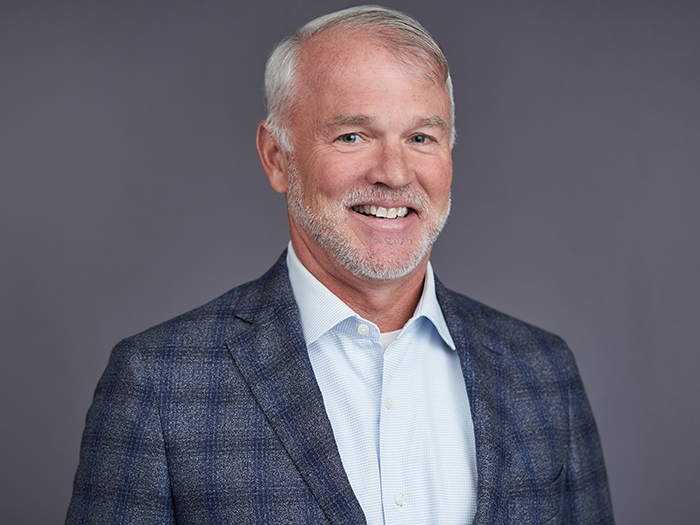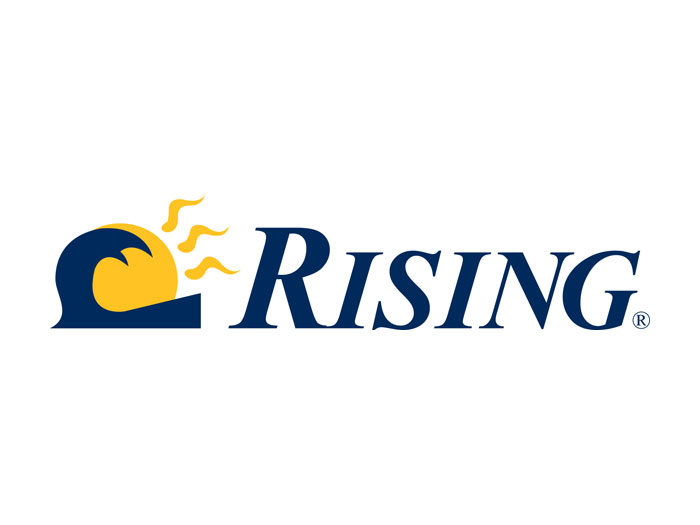NWCDC Presenters Offer Insights
The 23rd annual National Workers’ Compensation and Disability Conference® & Expo takes place Nov. 19-21 at the Mandalay Bay Resort and Casino in Las Vegas. The conference is produced by LRP Publications, which also publishes Risk & Insurance®.
 With more than 30 breakout sessions scheduled, conference organizers have tried to address many of the challenges and solutions to workers’ comp and disability practitioners. Here’s an in-depth look at a handful of those sessions.
With more than 30 breakout sessions scheduled, conference organizers have tried to address many of the challenges and solutions to workers’ comp and disability practitioners. Here’s an in-depth look at a handful of those sessions.
How to Reduce Costs With a Wellness Program
Friday, Nov. 21 from 10-11:15 a.m.
Work site wellness programs can improve health risk factors in employees that drive workers’ comp costs. That’s a fact that Karen Curran can prove definitively.
The director of health risk management for Pinnacol Assurance says an ongoing, five-year study of work site wellness programs implemented by policyholders of the Colorado insurer suggests that certain health issues increase the risks of an occupational injury and hike the costs of such claims.
“Workers’ comp adjusters have known this for years and years and years, but there was no statistically valid data to support their anecdote,” Curran said. “That’s what I’m going to bring to the table.”
The study is one of the few showing that modifiable health risks and management of comorbid conditions can impact the number and cost of occupational injuries. More importantly, Curran will outline a health risk management program she says can help reduce workplace injuries and severity. A key she says is focusing on people, not just safety.
“In workers’ comp we do a great job of promoting safety measures — ladder safety, use of harnesses, focusing on slips and falls,” she said. “But think about this: You’ve done all the ladder and scaffolding safety training you can. But you have a crew of 350-pound guys, which is not unheard of, but all your ladders are rated at a 250-pound level. What risk management needs to be taking place?”
Anyone contemplating a work site wellness program can benefit from the session, she said. While wellness programs have been around for years, they are new to the workers’ comp arena.
“One of the things that I think has happened is that wellness programs have resided within health insurance,” Curran said. “Over time we’ve seen that the health of employees is impacting productivity as well as other aspects of a business. All of a sudden, risk managers and others are saying, ‘this isn’t just related to our health care benefits, we’re seeing productivity and absenteeism impacted. We need to get employees healthier because they are not at work.’”
For a wellness program to be successful, Curran advocates speaking to employees in a way that is unintrusive. As she explains, it’s a matter of combining wellness with safety.
“In every business today, workers expect to work in a safe environment. They are used to having safety meetings where people say ‘wear your goggles, hard hats.’ That’s not intrusive to a person because people understand you want them to be safe,” she said. “We’ve used that infrastructure to bring wellness into this.”
Strategies for Overcoming Operational Challenges and Benchmarking Program Performance
Wednesday, Nov. 19 from 11 a.m.-12:15 p.m.
A landmark study of claims leaders released last year gave companies a unique opportunity to measure their core competencies, best practices, technology, medical management performance, and talent development against those of their peers. With phase two of the study set to be revealed soon, organizations have a chance to drill down to the challenges they face and potential solutions. But the session will provide more than just the latest data.
“We want to really take the data and talk about it from an operational perspective,” said Denise Gillen-Algire, director of managed care and disability corporate risk for Safeway Inc. and the study’s author. “What does it mean to you and what are we doing from an organizational standpoint to drive what we are doing now or in the future?”
Joining Gillen-Algire on the panel will be Jason Beans, CEO of study-publisher, Rising Medical Solutions; Ray Jacobsen, managing director of Aon Benfield; and John Smolk, principal manager of workers’ compensation for Southern California Edison. The session will be targeted to anyone involved in managing claims.
“The study was focused on claims leaders from various industries — insurance companies, self-insured employers, third-party administrators — anyone who manages claims that would like to consider some of the operational challenges and see what options are available in terms of what their peers are doing and be able to talk about them,” Gillen-Algire said. “The focus is not just the data, but what are some of the business impacts of the results of the study and what can organizations do with the information to improve operational performance.”
The study includes key takeaways/recommendations organizations can address to improve operational performance. Included are things such as investing in talent development and alternative recruitment strategies to drive claims effectiveness. Another is to consider using predictive analytics and workflow automation, something many organizations currently do not do.
One that can be easily implemented by companies both large and small is leveraging data warehousing capabilities. That can be an easier alternative to a complete overhaul of a company’s data systems.
“The challenges many claims organizations face is the many legacy systems and peripheral systems that help them manage daily claims. So if we use a data warehouse or some mechanism to integrate them, that’s a lot more cost effective and possible,” Gillen-Algire said. “There would be no way most small- to mid-sized companies could replace their claims systems — it’s cost prohibitive, and impacts operations for nine months to a year.”
Additional challenges that the panel will address relate to the Affordable Care Act. For phase two of the study, the 404 claims leaders included in the survey were asked questions about whether health care reform has had an impact on their operations.
‘When we included them in the survey, we didn’t anticipate much response because we figured it was too new,” Gillen-Algire said. “Surprisingly, 27 percent of respondents reported some impact on claims.”
The top answer was cost shifting to workers’ comp followed by increases in overall claims costs. Other impacts from the ACA noted were an increased number of claims and limited access to medical providers.
Health Care Reform: Strategies You Can Apply Now
Thursday, Nov. 20 from 1:30-2:45 p.m.
With 27 percent of claims leaders in a recent survey saying they are already feeling the effects of the Affordable Care Act, it is time for organizations to take action. That’s the idea behind this breakout session.
“There’s a lot of posturing and discussion around guessing, forecasting the impact of the ACA. This session will take a point/counterpoint perspective,” said Denise Gillen-Algire, director of managed care and disability corporate risk for Safeway Inc. “We will present some known data from studies/research, but will also take that information and say, ‘OK, now what do you do as claims organizations to mitigate the impact or prepare for it.’ That’s the key focus of the session.”
Gillen-Algire and William Wilt, president of Assured Research, will offer a high-level presentation targeted to workers’ comp practitioners who are concerned about the impact of ACA on their claims. They will provide the latest data as well as strategies companies can take immediately.
“One of the key strategies is how organizations think about their partnerships with physicians, because physicians and health care organizations are going to be the key to managing workers’ comp claims now, knowing that medical is almost 60 percent of claims costs,” Gillen-Algire said. “It is expected that will increase. So your relationship and how you manage physician contracts and networks is going to be important.”
Risk Financing: Selecting the Best Option for Your Company
Wednesday, Nov. 19 from 2:30-3:45 p.m.
Is retention worth the risk? That’s a question many companies are trying to answer as they seek ways to reduce their workers’ comp costs.
“The ideal target audience for the session is risk managers or CFOs from mid- to large-sized companies — companies that are big enough to consider retaining risk as part of their workers’ comp program,” said Mark Walls, vice president of communications and strategic analysis at Safety National. “
Walls will discuss the various risk financial options available and highlight the significant differences between guaranteed cost coverage, high deductible programs and self insurance. “For example, a lot of people think high deductibles and self insurance are the same thing,” he explained. “It’s really not. There are a lot of nuances that are very different. It’s really important for risk managers to understand those differences.”
The goal of the session is to help organizations find their ideal program. That may mean taking on more risk or staying with what they already have.
“The big reason to shift out of guaranteed cost coverage is the opportunity to save money,” Walls said. “Your guaranteed cost premiums are based on your anticipated losses plus built in expenses and profit for the carrier. So when you switch to some type of risk retention program, you have the ability to achieve savings not only from the expense side, but there is also a tremendous opportunity to achieve savings from your risk control practices by reducing your losses, which’ll have a direct impact to your bottom line.”
That can be a double-edged sword for some organizations, however. As Walls explained, taking on some of the risk requires a solid loss prevention program.
“If your losses go bad, are higher than expected, it could end up costing you more money,” he said. “Because of that, you’ve got to have the foundation of the very strong loss control/loss prevention program.”
Apply Post-Loss Claims Data to Structure Your Pre-Loss Safety Culture Program
Thursday Nov. 20 from 8:30-9:45 a.m.
Ten years ago, Cooper Standard Automotive had 647 open claims and reserves of up to $10 million. Today there are 121 claims with reserves under $3 million. What made for the change was looking at the company’s post loss information to prevent future injuries and changing the way things are communicated.
“I’m saying look at your loss run. Where are your costs? What department are they in?” said Patricia Hostine, global manager for workers’ compensation at Cooper Standard. “What I’m saying is, ‘look at what your payments are – pivot table – dissect them. What locations are struggling? It’s not predictive modeling; it’s just looking at what you are spending.”
Using your loss data information can help develop your brand for safety and workers’ comp. Having a brand for these programs is key.
“We don’t think about branding workers’ comp, but if you don’t have a brand, how do you know what your goals and objectives are?” Hostine said. “Branding and the workers’ comp piece never seem to be linked. I link them because if there is no brand, how do you know what your brand is? Otherwise it becomes the cost of doing business.”
The brand piece helps improve the way the safety message is communicated. Hostine said it’s important to restructure the language and use the right message to help injured workers navigate through the workers’ comp process and return to work sooner.
“How do you reply to your stakeholders? An employee is a stakeholder. So the most basic [way to restructure language]is ‘is it an injured worker? A claimant? Is it a slug?’” she said. “He is a valued employee … when did they go from employee to claimant because they are still an employee and even better, a valued employee.”










